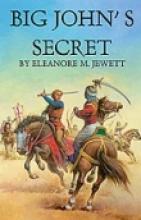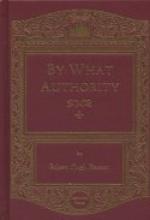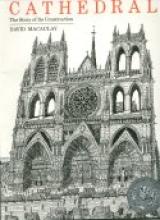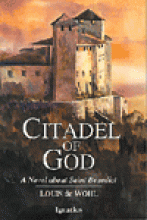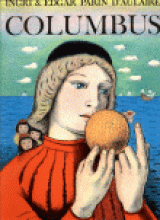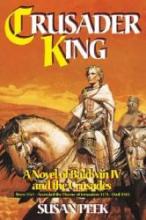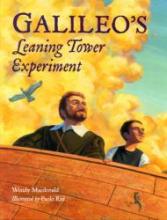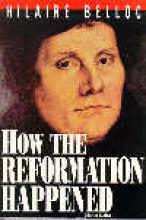Middle Ages
Big John's Secret
This is an interesting and engaging story for middle-school children - especially 5th to 8th grade. It offers a surprisingly balanced view of the Crusades as well as beautiful themes of faithfulness and forgiveness. While written at an appropriate level for young children, the author is honest about the evil and destruction that came out of the previous crusade (the infamous 4th crusade in which the Christians sacked Constantinople). In the course of discussion, the characters further distinguish between those who come to the Crusades to free Christian prisoners and those who are after glory and material gain. Finally, this subtle running theme about motive and warfare is brought to a climax in the person of St. Francis of Assisi.
While some of the plot comes across as a little predictable (making it less appealing, perhaps to high schoolers), the themes and major events are thoughtful and extremely well-researched. The segment in which Big John crosses paths with St. Francis of Assisi is based on a true incident in which the Saint went into the Saracen camp to preach to the Sultan about Christ.
This book was donated for review by Bethlehem Books
By What Authority
It is early in the reign of Queen Elizabeth. Religion and politics are curiously mixed and confused. How will the people of England survive this tumultuous time and emerge as one of the great powers on the earth. This is the setting for By What Authority by Lord Robert Hugh Benson. It is the story of how two families, one Catholic and one Protestant, sort through the confusion and endure the suffering of finding and maintaining a religious identity.
The head of the Catholic family, Sir Nicholas Maxwell, is the Lord of a section in England just south of London. The Protestant family, Norris, lives next door and has a good rapport with the old Catholic family. The primarily Protestant village has great love for the Lord and his family and forgive them their superstitious religion. It is obvious that the younger Maxwell son is in love with Isabel Norris but the differences in their religions keep them apart – for a time.
Isabel Norris is a Jane Austen -type character, full of virtue and feminine moderation. She is happily Protestant and deeply devoted to her beloved Jesus. Her father, sensing the Maxwell youth's love for her, and worried lest the Maxwell ladies should convert her daughter to Catholicism, sends her to a friend in the country who is STRICTLY Puritan. His hope is that she will be repelled by the strictness and return to his middle-of-the-road Church of England Protestantism. Isabel is indeed horrified at the fiery God portrayed in the Puritan church but the movements of her heart and religious sentiments foreshadow her as a Catholic at heart. While she is away her father dies and when she returns, Lady Maxwell's sister becomes her living companion. This sister is actually a nun who was sent away from her convent and so begins the slow conversion of Isabel. Sir Benson is masterful at describing the mental and spiritual movements of a soul and so the reader is brought through all the agitation and wonder of Isabel discovering, discarding and finally accepting the truth about the Catholic Faith. In the midst of her struggles, young Hubert Maxwell has stated his intentions toward her and begs her to wait for him, claiming that the religious issue will resolve itself somehow. He leaves to sail off with Sir Francis Drake on one of his first piratical voyages. When he returns, ready to embrace her AND proud to announce his conversion to her Protestant faith, he finds that she has very nearly converted to Catholicism. He is furious and offers to be whatever religion she wants. In saying that, he has lost her. To her, the Faith is something so intrinsic that it cannot merely be put on and off as is convenient. She maintains her love for him through the whole story but she knows that she cannot be his wife.
All the while Isabel is suffering and coming into the Catholic Faith, her brother Anthony has graduated from Cambridge and, full of patriotism and religious fervor, sets out to set himself up in the world. He goes to work for the Archbishop of Canterbury and so is thrust into the politics and religion of the times. He has an occasion to meet and debate with a Catholic man and feels his Protestant beliefs disturbed. He also witnesses Edmund Campion's so-called trial and his execution and is very much affected by it. Sir Benson spends a lot of time describing the trial and relating the arguments made on both sides. During this trial, Anthony is basically converted. He sees that ALL the religious questions boil down to who has the authority to interpret the Bible and speak for Christ. Protestantism taken to its extreme would have each person interpreting the Bible as he would and becoming his own authority. That in itself did not fit with scripture, he thought. He realizes that the Church of Rome has the greatest claim to that authority. He submits his resignation to the Archbishop and attends an Ignatian Retreat with Father Robert Persons. At the end of the retreat he goes to tell his sister, Isabel that he has converted only to find her in the same situation. They come into the Church together to the great joy of the Maxwells (excepting Hubert).
Anthony becomes a priest at a seminary on the Continent and returns with Isabel to England at the time of the defeat of the Spanish Armada. He eventually is captured and threatened with torture and death. He meets with the Queen herself and she offers to let him leave the country alive yet have it let out that he signed "the oath" which says that he acknowledges the Church of England. He, of course, refuses and the enraged Queen sends him off to the torturers. He dies on Easter morning as Isabel kneels at his bedside reading the Gospel of the day. She has decided to leave England and perhaps enter religious life.
One of the most interesting aspects of the story is Benson's portrayal of Queen Elizabeth. She is fierce and unforgiving yet feminine and remorseful. He is very successful at describing the development of the awe in which her subjects hold her. She is awe inspiring. She is a formidable enemy and very moved by the loyalty of her people. She admires the gallantry and strength of the Catholic martyrs. She does not seem to be a deeply religious person herself and so cannot understand why these Catholics can't just accept things in order to live and have peace. He portrays her as having a certain goodness that is overshadowed by a multitude of forces, both within her and without.
The story would be excellent for upper high school level (and any interested adult). It might be interesting to read it along with a biography of St. Edmund Campion or Sir Francis Drake, and some history of the Spanish Armada. It is a compelling period in history and bears some deep thought as to its effect on today's world.
Cathedral: The Story of Its Construction
Citadel of God
Against this backdrop, the novel goes on to tell of the lives of Boethius, who becomes governor for the king in spite of his patriotism for the dying Rome; Peter, the young would-be assassin and patriot, who grows up to become a conflicted Byzantine ambassador; and Benedictus, who becomes appalled by the corruption in Roman society and retreats into the wilderness to become a hermit. Eventually he founds several monasteries and travels to Montecassino. He drives out pagan sorcerers, works miracles and founds a monastery that truly became a "Citadel of God" that stood against paganism and Arianism, while the scholar Boethius is jailed and executed by the increasingly paranoid king, after writing The Consolation of Philosophy.
This book is strongly and vividly written, telling an epic tale of several famous lives intertwined during this unstable and critical time in the history of Christendom. The reading and interest level are suitable for ages 14 and up; however, the emotional maturity level may be somewhat higher. There are a couple of scenes, as when a Roman lady tries to seduce the young Benedictus, or a corrupt Christian priest converses with his mistress, that though not overly graphic might be unsuitable to some young readers.
Columbus
This is another great biography by the D'Aulaire's. Well told and beautifully illustrated, this book will introduce you to Columbus' boyhood dreams, some of the reasons why he (and others) believed the earth was round, his early sailing days and interest in the tales of Leif Ericson, and of course the story of his family, his long quest for sponsorship of his desired trip and finally his voyages to America. Most adults don't know as much about Columbus as your children can learn from this story.
Crusader King, A Novel of Baldwin IV and the Crusades
Galileo's Leaning Tower Experiment
Science readers are to be found if you look around enough as this book demonstrates. It is the fictional story of Massimo, a boy who regularly throws his uncle's lunch off a bridge to his boat as his uncle rows by below. Galileo happens to see that the bread and the cheese land at the same time. The story ends atop the leaning Tower of Pisa, as legend suggests Galileo did.
The illustrations are a little disappointing, the people in particular. The story is sometimes forced as math and science readers often are; however, overall it is a great tale that teaches a basic principle of physics sure to have your children dropping objects from heights. It even alludes to Galileo's ramp experiments on acceleration. The last page briefly fills in the reader on the period in history, what in the story is fact and fiction, and the formula for calculating speed.
Overall this is a great introductory physics science book.
Grisly Grisell
Grisly Grisell is one of the newly reprinted titles from Lepanto Press' Knights and Ladies series. It is a tale of adventure and good romance. Patience, perseverance and kindness are strong and noble virtues of Grisell, which endear her to others, including the reader.
What sets this book apart from others are the Catholic overtones. For example, Grisell has a positive experience growing up in a convent. In fact, she was hoping to be a nun, when her lack of a dowry and an unsympathetic Abbess (of course she is Spanish and this is British historical fiction) prevented it. Although the Catholic Church is presented, overall, very positively, this particular incident, when the Pope appoints a greedy relative to take over the convent, may warrant some discussion to clarify that there have been some terrible Popes in history, but that the Holy Spirit is still with the Catholic Church. Even though Grisell is prevented from becoming a nun, she is not embittered by the incident against the Church. She patiently accepts it as a cross to bear.
Although the story is fast paced and of interest to older readers (Ages 13-up), it could be read aloud to a younger audience. My only difficulty with the story is that it sometimes was confusing to know, in the larger scheme of the War, who was on whose side. Even if the reader is somewhat muddled, the story does eventually get worked out and the theme within the story carries the reader to the end.
How the Reformation Happened
This book is a surprisingly readable and interesting account of "How the Reformation Happened". Although it is written from a Catholic perspective, Mr. Belloc is very fair in dishing out the blame to the appropriate people on both sides. The years covered are 1517 (when Martin Luther affixed his protest against the Indulgences to a church door in Wittenberg, Germany) to 1648, but also includes commentary of the implications of the "Reformation" on our own times. He covers all the major countries involved and is very skilled at explaining the essentials of what happened and the lessons we should take from it. This is the answer for homeschoolers looking for the whole story of what is so often misrepresented in History texts - whether Protestant or Secular. It makes good reading for adults who are teaching younger children or for high schoolers to read on their own. Includes a complete index.

